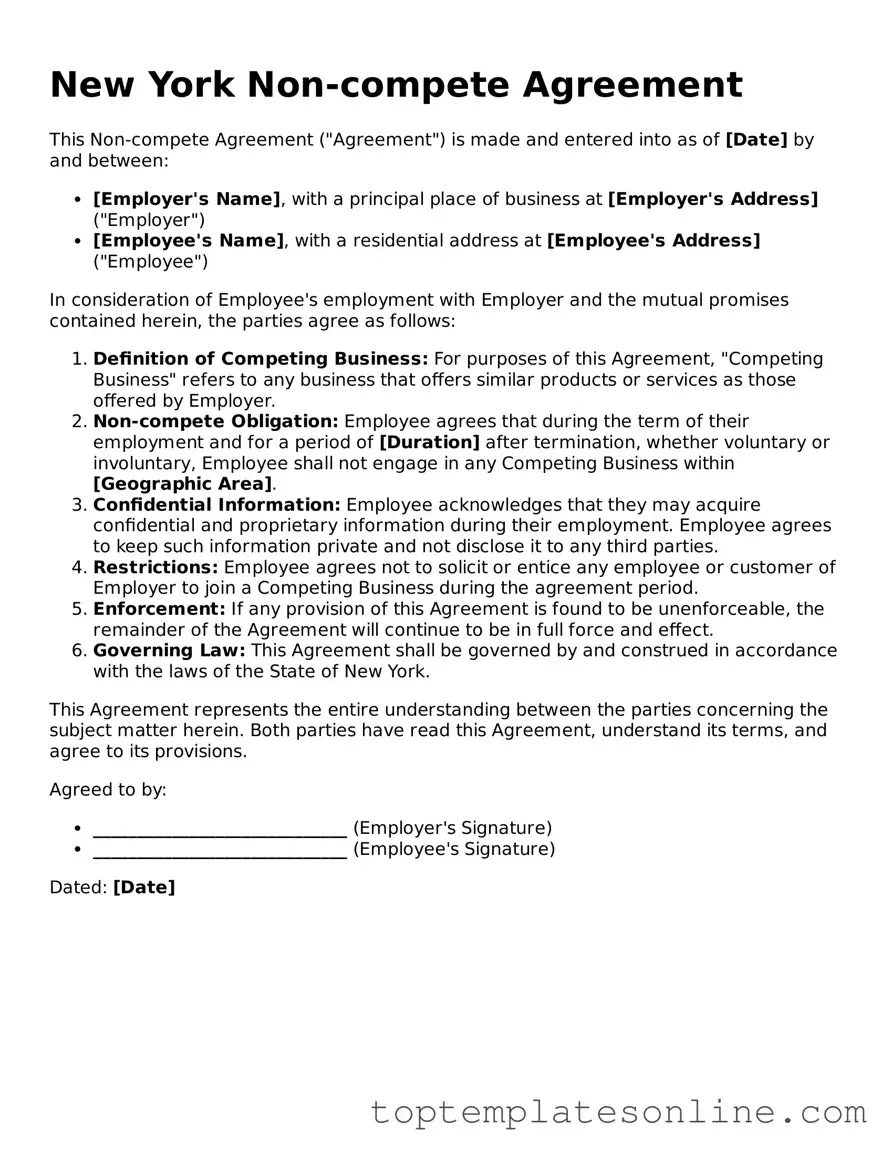Blank Non-compete Agreement Template for New York State
A New York Non-compete Agreement form is a legal document designed to prevent an employee from engaging in business activities that directly compete with their employer after leaving the company. This agreement helps protect the employer's trade secrets, customer relationships, and overall business interests. Understanding the nuances of this form is essential for both employers and employees to ensure fair practices and compliance with state laws.
Customize Non-compete Agreement Here
